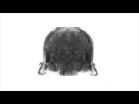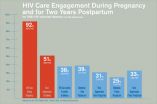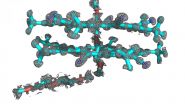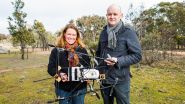Is incense bad for your health?
Comparison between indoor use of cigarettes and incense provides surprising results
2015-08-25
(Press-News.org) The burning of incense might need to come with a health warning. This follows the first study evaluating the health risks associated with its indoor use. The effects of incense and cigarette smoke were also compared, and made for some surprising results. The research was led by Rong Zhou of the South China University of Technology and the China Tobacco Guangdong Industrial Company in China, and is published in Springer's journal Environmental Chemistry Letters.
Incense burning is a traditional and common practice in many families and in most temples in Asia. It is not only used for religious purposes, but also because of its pleasant smell. During the burning process, particle matter is released into the air. This can be breathed in and trapped in the lungs, and is known to cause an inflammatory reaction. Not much research has been done on incense as a source of air pollution, although it has been linked to the development of lung cancer, childhood leukemia and brain tumors.
Zhou's team therefore assessed the health hazards associated with using incense smoke in the home. They went one step further by comparing these results for the first time with mainstream studies of cigarette smoke. Two types of incense were tested. Both contained agarwood and sandalwood, which are among the most common ingredients used to make this product. Tests were run, among others, to gauge the effects of incense and cigarette smoke on Salmonella tester strains and on the ovary cells of Chinese hamsters.
Incense smoke was found to be mutagenic, meaning that it contains chemical properties that could potentially change genetic material such as DNA, and therefore cause mutations. It was also more cytotoxic and genotoxic than the cigarette used in the study. This means that incense smoke is potentially more toxic to a cell, and especially to its genetic contents. Mutagenics, genotoxins and cytotoxins have all been linked to the development of cancers.
Smoke from the sampled incense was found to consist almost exclusively (99 percent) of ultrafine and fine particles, and is therefore likely to have adverse health effects. Taken together, the four incense smoke samples contained 64 compounds. While some of these are irritants or are only slightly harmful (hypotoxic), ingredients in two of the samples are known to be highly toxic.
"Clearly, there needs to be greater awareness and management of the health risks associated with burning incense in indoor environments," says Zhou, who hopes the results will lead to an evaluation of incense products and help to introduce measures to reduce smoke exposure.
However, he warns that one should not simply conclude that incense smoke is more toxic than cigarette smoke. The small sample size, the huge variety of incense sticks on the market and differences in how it is used compared to cigarettes must be taken into account.
INFORMATION:
Reference: Zhou, R. et al (2015). Higher cytotoxicity and genotoxicity of burning incense than cigarette, Environmental Chemistry Letters. DOI 10.1007/s10311-015-0521-7
ELSE PRESS RELEASES FROM THIS DATE:
2015-08-25
Depressed people who turn to their smart phones for relief may only be making things worse.
A team of researchers, that included the dean of Michigan State University's College of Communication Arts and Sciences, found that people who substitute electronic interaction for the real-life human kind find little if any satisfaction.
In a paper published in the journal Computers in Human Behavior, the researchers argue that relying on a mobile phone to ease one's woes just doesn't work.
Using a mobile phone for temporary relief from negative emotions could worsen psychological ...
2015-08-25
MADISON -- Colorful and expressive, the eyes are central to the way people interact with each other, as well as take in their surroundings.
That makes amblyopia -- more commonly known as "lazy eye" -- all the more obvious, but the physical manifestation of the most common cause of vision problems among children the world over is actually a brain disorder.
"Most often in amblyopia patients, one eye is better at focusing," says Bas Rokers, a University of Wisconsin-Madison psychology professor. "The brain prefers the information from that eye, and pushes down the signal ...
2015-08-25
Pregnancy could be a turning point for HIV-infected women, when they have the opportunity to manage their infection, prevent transmission to their new baby and enter a long-term pattern of maintenance of HIV care after giving birth--but most HIV-infected women aren't getting that chance. That is the major message from a pair of new studies in Philadelphia, one published early online this month in the journal Clinical Infectious Diseases, and the other published in July in PLOS ONE.
The studies, led by a team of researchers from Drexel University and the Philadelphia Department ...
2015-08-25
A team from the University of Illinois at Urbana-Champaign and Indiana University combined two techniques to determine the structure of cyanostar, a new abiological molecule that captures unwanted negative ions in solutions.
When Semin Lee, a chemist and Beckman Institute postdoctoral fellow at Illinois, first created cyanostar at Indiana University, he knew the chemical properties, but couldn't determine the precise atomical structure. Lee synthesized cyanostar for its unique ability to bind with large, negatively charged ions, which could have applications such as ...
2015-08-25
Many political leaders, scientists, educators and parents believe that failure is the best teacher.
Scientists have long understood that the brain has two ways of learning. One is avoidance learning, which is a punishing, negative experience that trains the brain to avoid repeating mistakes. The other is reward-based learning, a positive, reinforcing experience in which the brain feels rewarded for reaching the right answer.
A new MRI study by USC and a group of international researchers has found that having the opportunity to learn from failure can turn it into ...
2015-08-25
Since the early days of fertility treatment, women undergoing IVF treatment have had to place a hormonal gel in their vagina on a daily basis for at least 14 days after embryo transfer. The hormone is necessary to increase the chances of pregnancy, but it may also cause some side effects in the form of irritation and leaky discharge.
However, the results of a new scientific study suggest that women will be able to avoid this kind of discomfort in the future.
"Fertility treatment is a physical and mental challenge for childless couples. The daily treatment with hormonal ...
2015-08-25
Researchers at The Australian National University (ANU) and The University of Sydney have developed a world-first radio-tracking drone to locate radio-tagged wildlife.
Lead researcher Dr Debbie Saunders from the ANU Fenner School of Environment and Society said the drones have successfully detected tiny radio transmitters weighing as little as one gram. The system has been tested by tracking bettongs at the Mulligan's Flat woodland sanctuary in Canberra.
"The small aerial robot will allow researchers to more rapidly and accurately find tagged wildlife, gain insights into ...
2015-08-25
A research team at Linköping University, together with colleagues in Europe and the United States, has shown that at extremely high pressure even the innermost electrons in the atomic nuclei of the metal osmium begin to interact with each other, a phenomenon never witnessed before. The findings have been published in Nature.
"If we know more about how a matter works, we will be in a better position to develop materials that withstand extreme conditions. In research we're constantly making advances, but in this case we've taken a giant leap", says Igor Abrikosov, ...
2015-08-25
A new £6.65 million grant for research aimed at accelerating the discovery and application of new advanced materials for the energy sector was announced today by the Engineering and Physical Sciences Research Council (EPSRC).
The grant, awarded to a team led by Professor Matthew Rosseinsky of the University of Liverpool, will support a programme, Integration of Computation and Experiment for Accelerated Materials Discovery.
Professor Rosseinsky will head up an expert team at Liverpool and University College London that will work to tackle the challenge of designing ...
2015-08-25
Noroviruses are the predominant cause of gastroenteritis outbreaks in community settings such as hospitals, cruise ships, and schools. The virus is extremely contagious and is mostly transmitted via "fecal-oral-route", i.e., through contaminated hands or contaminated food. Symptoms include violent and sudden onset of diarrhea, vomiting, and nausea.
"It is therefore important to provide a safe and harmless disinfectant against human norovirus," explains Grant Hansman, head of CHS junior research group at the German Cancer Research Center noroviruses and the University ...
LAST 30 PRESS RELEASES:
[Press-News.org] Is incense bad for your health?
Comparison between indoor use of cigarettes and incense provides surprising results



